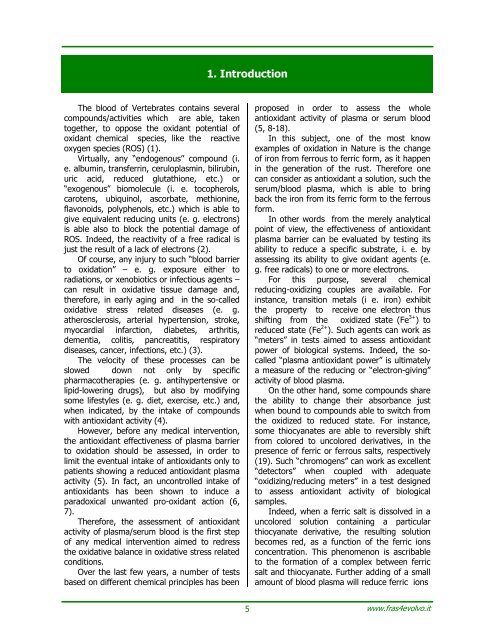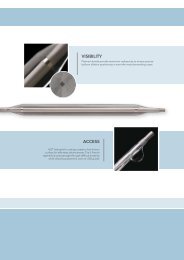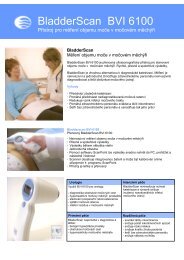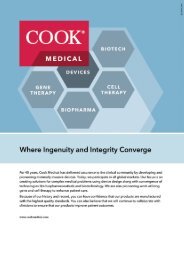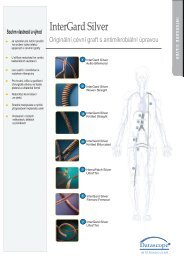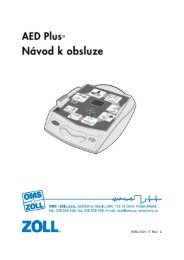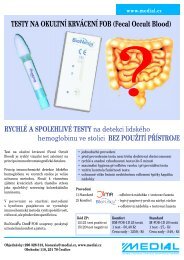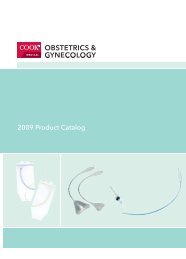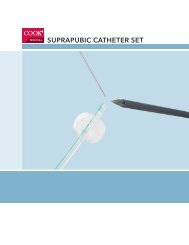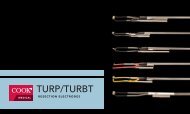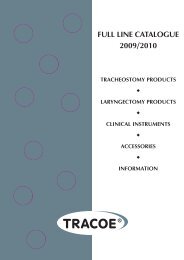The BAP test and the global assessment of oxidative stress ... - Medial
The BAP test and the global assessment of oxidative stress ... - Medial
The BAP test and the global assessment of oxidative stress ... - Medial
You also want an ePaper? Increase the reach of your titles
YUMPU automatically turns print PDFs into web optimized ePapers that Google loves.
1. Introduction<strong>The</strong> blood <strong>of</strong> Vertebrates contains severalcompounds/activities which are able, takentoge<strong>the</strong>r, to oppose <strong>the</strong> oxidant potential <strong>of</strong>oxidant chemical species, like <strong>the</strong> reactiveoxygen species (ROS) (1).Virtually, any “endogenous” compound (i.e. albumin, transferrin, ceruloplasmin, bilirubin,uric acid, reduced glutathione, etc.) or“exogenous” biomolecule (i. e. tocopherols,carotens, ubiquinol, ascorbate, methionine,flavonoids, polyphenols, etc.) which is able togive equivalent reducing units (e. g. electrons)is able also to block <strong>the</strong> potential damage <strong>of</strong>ROS. Indeed, <strong>the</strong> reactivity <strong>of</strong> a free radical isjust <strong>the</strong> result <strong>of</strong> a lack <strong>of</strong> electrons (2).Of course, any injury to such “blood barrierto oxidation” – e. g. exposure ei<strong>the</strong>r toradiations, or xenobiotics or infectious agents –can result in <strong>oxidative</strong> tissue damage <strong>and</strong>,<strong>the</strong>refore, in early aging <strong>and</strong> in <strong>the</strong> so-called<strong>oxidative</strong> <strong>stress</strong> related diseases (e. g.a<strong>the</strong>rosclerosis, arterial hypertension, stroke,myocardial infarction, diabetes, arthritis,dementia, colitis, pancreatitis, respiratorydiseases, cancer, infections, etc.) (3).<strong>The</strong> velocity <strong>of</strong> <strong>the</strong>se processes can beslowed down not only by specificpharmaco<strong>the</strong>rapies (e. g. antihypertensive orlipid-lowering drugs), but also by modifyingsome lifestyles (e. g. diet, exercise, etc.) <strong>and</strong>,when indicated, by <strong>the</strong> intake <strong>of</strong> compoundswith antioxidant activity (4).However, before any medical intervention,<strong>the</strong> antioxidant effectiveness <strong>of</strong> plasma barrierto oxidation should be assessed, in order tolimit <strong>the</strong> eventual intake <strong>of</strong> antioxidants only topatients showing a reduced antioxidant plasmaactivity (5). In fact, an uncontrolled intake <strong>of</strong>antioxidants has been shown to induce aparadoxical unwanted pro-oxidant action (6,7).<strong>The</strong>refore, <strong>the</strong> <strong>assessment</strong> <strong>of</strong> antioxidantactivity <strong>of</strong> plasma/serum blood is <strong>the</strong> first step<strong>of</strong> any medical intervention aimed to redress<strong>the</strong> <strong>oxidative</strong> balance in <strong>oxidative</strong> <strong>stress</strong> relatedconditions.Over <strong>the</strong> last few years, a number <strong>of</strong> <strong>test</strong>sbased on different chemical principles has beenproposed in order to assess <strong>the</strong> wholeantioxidant activity <strong>of</strong> plasma or serum blood(5, 8-18).In this subject, one <strong>of</strong> <strong>the</strong> most knowexamples <strong>of</strong> oxidation in Nature is <strong>the</strong> change<strong>of</strong> iron from ferrous to ferric form, as it happenin <strong>the</strong> generation <strong>of</strong> <strong>the</strong> rust. <strong>The</strong>refore onecan consider as antioxidant a solution, such <strong>the</strong>serum/blood plasma, which is able to bringback <strong>the</strong> iron from its ferric form to <strong>the</strong> ferrousform.In o<strong>the</strong>r words from <strong>the</strong> merely analyticalpoint <strong>of</strong> view, <strong>the</strong> effectiveness <strong>of</strong> antioxidantplasma barrier can be evaluated by <strong>test</strong>ing itsability to reduce a specific substrate, i. e. byassessing its ability to give oxidant agents (e.g. free radicals) to one or more electrons.For this purpose, several chemicalreducing-oxidizing couples are available. Forinstance, transition metals (i e. iron) exhibit<strong>the</strong> property to receive one electron thusshifting from <strong>the</strong> oxidized state (Fe 3+ ) toreduced state (Fe 2+ ). Such agents can work as“meters” in <strong>test</strong>s aimed to assess antioxidantpower <strong>of</strong> biological systems. Indeed, <strong>the</strong> socalled“plasma antioxidant power” is ultimatelya measure <strong>of</strong> <strong>the</strong> reducing or “electron-giving”activity <strong>of</strong> blood plasma.On <strong>the</strong> o<strong>the</strong>r h<strong>and</strong>, some compounds share<strong>the</strong> ability to change <strong>the</strong>ir absorbance justwhen bound to compounds able to switch from<strong>the</strong> oxidized to reduced state. For instance,some thiocyanates are able to reversibly shiftfrom colored to uncolored derivatives, in <strong>the</strong>presence <strong>of</strong> ferric or ferrous salts, respectively(19). Such “chromogens” can work as excellent“detectors” when coupled with adequate“oxidizing/reducing meters” in a <strong>test</strong> designedto assess antioxidant activity <strong>of</strong> biologicalsamples.Indeed, when a ferric salt is dissolved in auncolored solution containing a particularthiocyanate derivative, <strong>the</strong> resulting solutionbecomes red, as a function <strong>of</strong> <strong>the</strong> ferric ionsconcentration. This phenomenon is ascribableto <strong>the</strong> formation <strong>of</strong> a complex between ferricsalt <strong>and</strong> thiocyanate. Fur<strong>the</strong>r adding <strong>of</strong> a smallamount <strong>of</strong> blood plasma will reduce ferric ions5www.fras4evolvo.it


